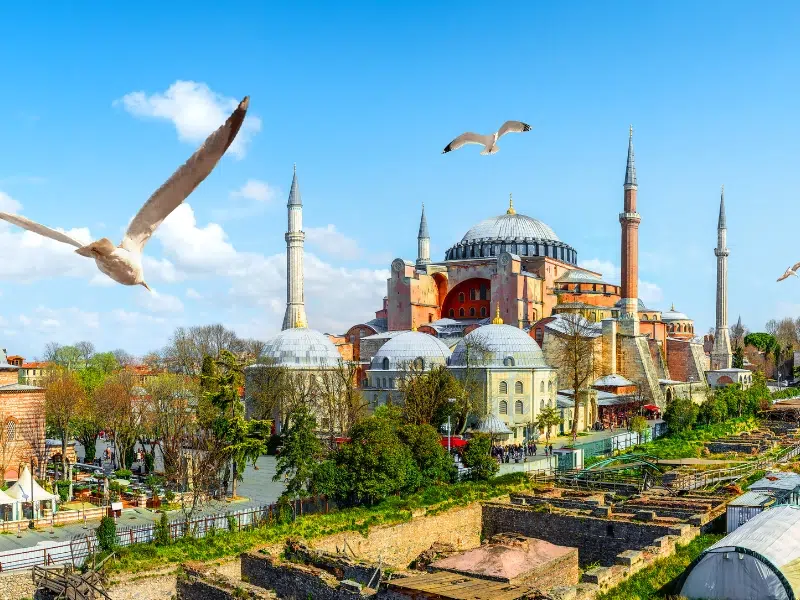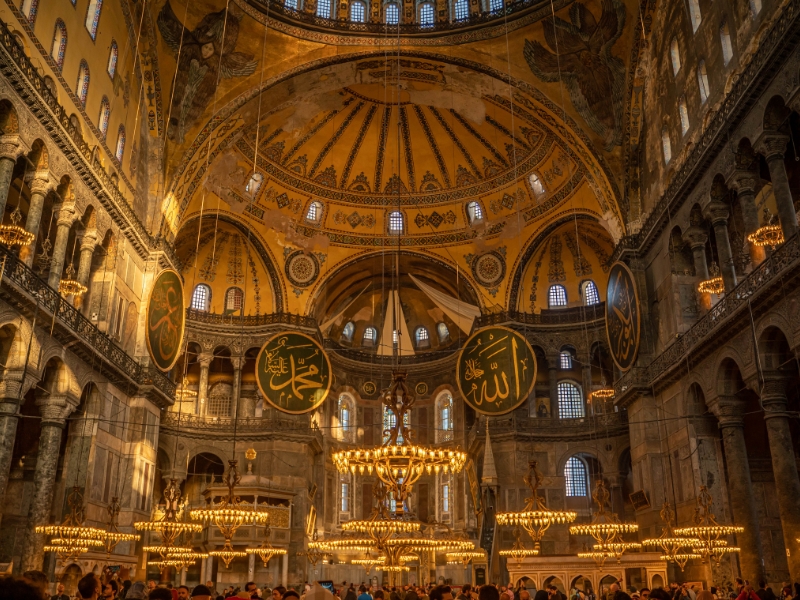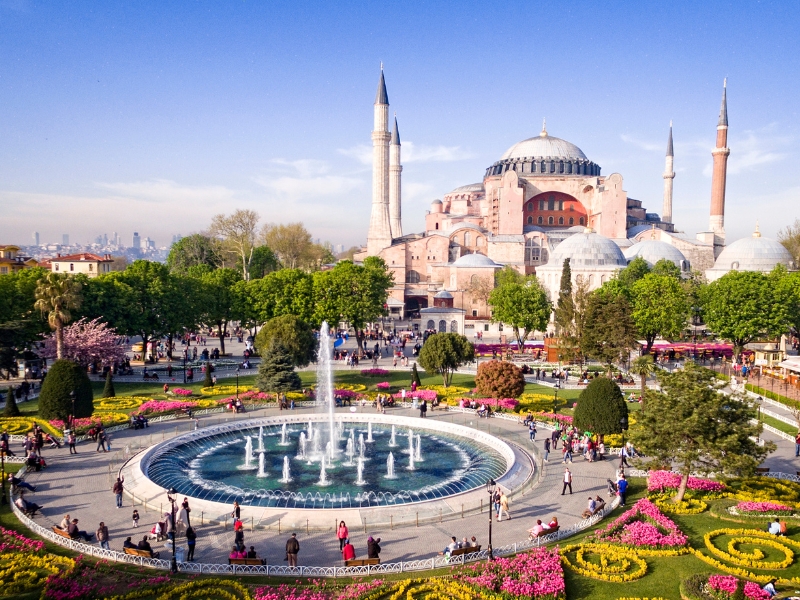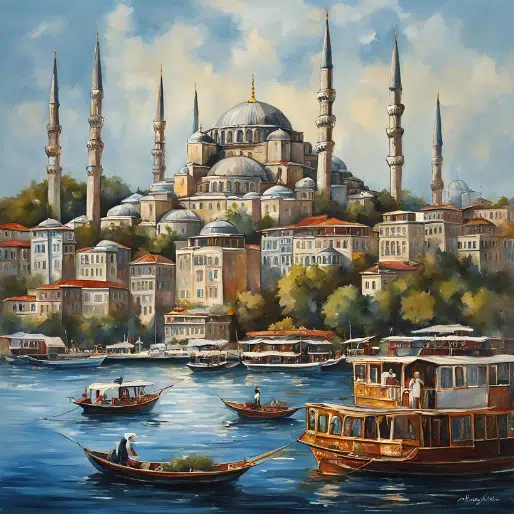
Table of Contents
Hagia Sophia, an iconic landmark in Istanbul, Turkey, stands as a testament to the architectural and engineering prowess of the Byzantine Empire. This magnificent structure, originally built as a Christian basilica in the 6th century, has served as a church, a mosque, and a museum throughout its long and fascinating history.
A Masterpiece of Byzantine Architecture
Completed in 537 AD under the reign of Emperor Justinian I, Hagia Sophia (meaning “Holy Wisdom” in Greek) stands as a monumental achievement in Byzantine architecture. The design of the basilica was entrusted to the renowned architects Isidore of Miletus and Anthemius of Tralles, who employed groundbreaking engineering methods to create a structure unlike any other of its time. Their innovative use of pendentives – curved triangular structures that support a circular dome over a square space – allowed for the creation of a vast and open interior without the need for bulky supports or pillars, revolutionizing architectural design.
At the heart of Hagia Sophia is its central dome, which rises to an astonishing height of 55.6 meters above the floor. This dome is one of the most iconic features of the structure, creating a sense of grandeur and transcendence. The dome appears to float above the building’s interior, seemingly suspended in air by an invisible force, a stunning feat of engineering. The light filtering through the building’s 40 arched windows, combined with the varying shades of dark and light marble, further enhances the sense of ethereal lightness and beauty within the space. The design invites visitors to look upward in wonder, while the interplay of light and shadow within the structure adds to the awe-inspiring atmosphere.
A Tapestry of History
Hagia Sophia has stood as a witness to centuries of monumental historical change. Originally constructed as a Christian cathedral, it was the largest and most important church in the Byzantine Empire, serving as the seat of the Patriarch of Constantinople. After the Ottoman conquest of Constantinople in 1453, the building underwent a remarkable transformation, as it was converted into a mosque.
This transition added significant Islamic architectural features to the structure. Four towering minarets were added to the exterior, and the interior was adapted with the introduction of Islamic elements such as the mihrab (prayer niche) facing Mecca, and the minbar (pulpit), which became central to the practice of Islamic worship. The Christian mosaics were covered over with plaster, and calligraphic inscriptions of Quranic verses adorned the walls.
In 1935, Hagia Sophia was secularized by the Turkish government under Mustafa Kemal Atatürk and converted into a museum, reflecting Turkey’s modernization efforts. This change allowed Hagia Sophia to be open to people from all walks of life, regardless of religious background, to appreciate its rich architectural, artistic, and historical legacy. As a museum, Hagia Sophia became a symbol of Istanbul’s rich cultural and religious diversity. However, in 2020, Hagia Sophia was reconverted into a mosque, though it remains open to visitors, maintaining its historical and spiritual significance to this day.

Experiencing Hagia Sophia
- Admire the architecture: Take time to marvel at the architectural grandeur of the building, from the soaring dome and the intricate mosaics to the elegant arches and the interplay of light and shadow.
- Explore the history: Learn about the fascinating history of the building, its transformation from church to mosque to museum, and its significance in the history of Constantinople and Istanbul.
- Appreciate the mosaics: Explore the surviving Byzantine mosaics, which depict religious figures and scenes, offering a glimpse into the artistic and religious traditions of the Byzantine Empire.
- Visit the museum: The museum within Hagia Sophia houses a collection of artifacts related to the building’s history.
Hagia Sophia is an iconic landmark that transcends religious and cultural boundaries. This magnificent structure, with its rich history and its enduring architectural beauty, continues to inspire and awe visitors from around the world, offering a unique and unforgettable glimpse into the past.

Hagia Sophia is part of Istanbul scavenger hunt and walking tour!
Embark on an unforgettable journey through the enchanting city of Istanbul with World City Trail. Our interactive walking tour combines the thrill of exploration with the rich history and culture of this beautiful city.
Key Features:
Interactive gameplay: Solve engaging puzzles and challenges as you explore the city.
Hidden gems: Uncover lesser-known spots.
Cultural insights: Learn about the city’s fascinating history.
Flexibility: Explore at your own pace and create your own itinerary.
Family friendly activity and a great way to explore the city!

Istanbul Scavenger Hunt and Self Guided Tour
Price Per Person
